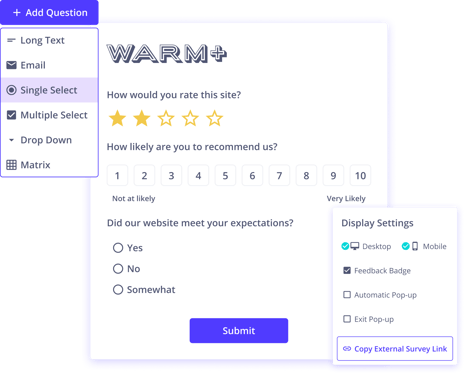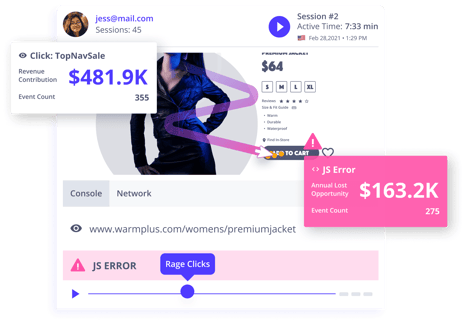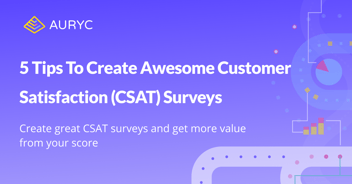Net promoter score (NPS) is widely regarded as the crown jewel of customer experience metrics. It measures how likely customers are to recommend a brand to their friends and family, and acts as an indicator of customer loyalty. Improving your NPS scores builds long-term healthy customer relationships and boosts business revenue and profit. In a study titled ‘Advocacy Drives Growth,’ the London School of Economics found that revenue grows by 1% at every 7% rise in a brand’s NPS.
While calculating NPS is easy and straightforward, it is important to measure it the right way, or else you will get a skewed picture of your business. In this blog, we show how to calculate NPS, highlight five mistakes people commonly make while measuring NPS, and finally how you can effectively measure NPS to leverage its true power.
Net Promoter Score Calculation
NPS, ranging from -100 to +100, is measured by asking customers how likely they are to recommend a company to their friends and colleagues. Based on their response, they can be categorized into one of the 3 categories:
- Promoters - Loyal, enthusiastic customers that will continue to refer others to the brand.
- Passives - Indifferent customers that could become promoters or switch to the competition.
- Detractors - Unsatisfied customers that could damage the company brand by sharing bad experiences and writing bad reviews about the company.
After collecting sufficient responses, NPS can be calculated by subtracting the percentage of detractors from the percentage of promoters:

Let us now proceed to the four mistakes you must avoid while measuring NPS.
Mistake #1: Adding Too Many Questions
Adding too many questions in your NPS survey or lumping it together with other surveys can easily frustrate your customers. As a result, customers don’t complete your survey, and you lose out on valuable insights. The trick to achieving high response rates in your NPS surveys is to make it quick and simple for the user to answer. Make your NPS surveys mobile-friendly, send personalized emails, embed the survey in the email body itself rather than giving a link, and do everything else you can to make answering your NPS surveys convenient for the customer.
Mistake #2: Surveying Your Audience At The Wrong Time
Asking your customers for feedback at random times will make them feel disengaged with your business. For instance, if you ask customers about their experience with your product immediately after purchase, they most likely won’t respond. On the contrary, it takes too long, and they might not remember the nuances and key details of their experience. There’s always a golden window to survey your customers depending on your industry, and it’s crucial to survey them at the right time.
Mistake #3: Not Asking For Details
As already mentioned, you shouldn’t ask your respondents too many questions. At the same time, it’s also essential to ask for relevant details to make your NPS survey worthwhile. For example, without knowing whether your respondent is an analyst, decision-maker, or some other executive, you won’t be able to segment your data and uncover hidden insights. For best results, use a combination of Numerical scales CES/numerical scale and open-ended questions to gather qualitative and quantitative data.
Mistake #4: Not Following Up After NPS Surveys
If you view NPS as simply a number and don’t follow it up with action, NPS will end up as a vanity metric. So, follow up on your NPS responses — ask detractors what you can improve on, ask promoters if they’d like to leave a testimonial, and so on. NPS scores must act as drivers of change for your company to be more customer-focused and customer-centric. Listening to your customers and taking action makes them feel valued, and ultimately builds strong relationships.
Mistake #5: Not zooming in on detractors
One segment of customers that you need to especially focus on after gathering your NPS data is detractors. Sure, they might be dissatisfied and probably switch to a competitor soon. But they also act like a mirror to your business with their sharp feedback, giving you an opportunity to improve. Taking the right actions in a timely manner makes your business better and may even turn detractors into promoters! However, ignoring the detractors and just resting on the positive feedback will only lead to stagnation down the road.
Measure NPS Effectively with Auryc
Committing any of the above mistakes can surely jeopardize the value of your NPS efforts. So how can you effectively measure NPS to enrich customer interactions, develop new products according to your customer's needs, and improve their overall experience with your business? The answer is Auryc.
Auryc is a customer experience intelligence platform that optimizes every customer experience across web and mobile to drive more revenue. It captures 100% of engagement events and content for customers and visitors - a high fidelity record of users’ digital journeys including all clicks, views, swipes, and user input, system performance data plus CES, NPS surveys, and feedback. Some of Auryc’s valuable features that can help you not only effectively measure NPS but go much further in understanding customer journeys are:
- VoC / Customer Feedback
You can utilize the Voice of the Customer (VoC) at every digital touchpoint to collect customer feedback, enabling you to identify what your customers truly want. You can decide when to send these surveys, to what audience, and how frequently to maximize the response rates of your NPS surveys.

Target the right audience at the right time with VoC
- Session Replays
Use session replays to deeply understand and rectify the pain points that customers highlight in your surveys. Session replays allow you to record detailed user sessions and capture user context to improve their experience.

Understand customer frustrations with session replays
Auryc is changing the way companies build better experiences for their customer. Whether you’re an analyst or a product marketer, you can use Auryc’s features to create memorable customer experiences. And that too, with no coding knowledge because Auryc is a no-code analytics platform! You can leverage the powerful suite of tools that Auryc provides by booking a demo today.



